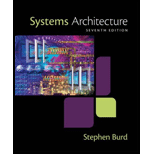
Base-12 number system:
Base-12 number system is a positional notation number system having 12 as its base. It is also called as duodecimal system that requires the digits 0 through 9 in addition to that it uses the symbol A and B.
Base-10 number system:
Decimal is the base-10 number system, which only uses the digits 0 through 9. The base-10 number system is a positional notation with a radix of 10.
Base 10:
Decimal is the base-10 number system, which only uses the digits 0 through 9. The base-10 number system is a positional notation with a radix of 10.
Base-2:
Base-2 number system consists of binary numbers “0” and “1”. The base-2 number system is a positional notation with a radix of 2.
Base 10:
Decimal is the base-10 number system, which only uses the digits 0 through 9. The base-10 number system is a positional notation with a radix of 10.
Base-5:
Base-5 number system is also called as Quinary number system that uses the value 0 through 4. The base-5 number system is a positional notation with a radix of 5.
Base-12 number system:
Base-12 number system is a positional notation number system having 12 as its base. It is also called as duodecimal system that requires the digits 0 through 9 in addition to that it uses the symbol A and B.
Base-10 number system:
Decimal is the base-10 number system, which only uses the digits 0 through 9. The base-10 number system is a positional notation with a radix of 10.
Base 10:
Decimal is the base-10 number system, which only uses the digits 0 through 9. The base-10 number system is a positional notation with a radix of 10.
Base-2:
Base-2 number system consists of binary numbers “0” and “1”. The base-2 number system is a positional notation with a radix of 2.
Base 10:
Decimal is the base-10 number system, which only uses the digits 0 through 9. The base-10 number system is a positional notation with a radix of 10.
Base-5:
Base-5 number system is also called as Quinary number system that uses the value 0 through 4. The base-5 number system is a positional notation with a radix of 5.
Want to see the full answer?
Check out a sample textbook solution
Chapter 3 Solutions
Systems Architecture
- Draw an ERD that represents a book in a library system. Be sure to add relationship types, key attributes, attributes and multiplicity on the ERD.arrow_forward2:21 m Ο 21% AlmaNet WE ARE HIRING Experienced Freshers Salesforce Platform Developer APPLY NOW SEND YOUR CV: Email: hr.almanet@gmail.com Contact: +91 6264643660 Visit: www.almanet.in Locations: India, USA, UK, Vietnam (Remote & Hybrid Options Available)arrow_forwardProvide a detailed explanation of the architecture on the diagramarrow_forward
- hello please explain the architecture in the diagram below. thanks youarrow_forwardComplete the JavaScript function addPixels () to calculate the sum of pixelAmount and the given element's cssProperty value, and return the new "px" value. Ex: If helloElem's width is 150px, then calling addPixels (hello Elem, "width", 50) should return 150px + 50px = "200px". SHOW EXPECTED HTML JavaScript 1 function addPixels (element, cssProperty, pixelAmount) { 2 3 /* Your solution goes here *1 4 } 5 6 const helloElem = document.querySelector("# helloMessage"); 7 const newVal = addPixels (helloElem, "width", 50); 8 helloElem.style.setProperty("width", newVal); [arrow_forwardSolve in MATLABarrow_forward
- Hello please look at the attached picture. I need an detailed explanation of the architecturearrow_forwardInformation Security Risk and Vulnerability Assessment 1- Which TCP/IP protocol is used to convert the IP address to the Mac address? Explain 2-What popular switch feature allows you to create communication boundaries between systems connected to the switch3- what types of vulnerability directly related to the programmer of the software?4- Who ensures the entity implements appropriate security controls to protect an asset? Please do not use AI and add refrencearrow_forwardFind the voltage V0 across the 4K resistor using the mesh method or nodal analysis. Note: I have already simulated it and the value it should give is -1.714Varrow_forward
 Systems ArchitectureComputer ScienceISBN:9781305080195Author:Stephen D. BurdPublisher:Cengage Learning
Systems ArchitectureComputer ScienceISBN:9781305080195Author:Stephen D. BurdPublisher:Cengage Learning C++ for Engineers and ScientistsComputer ScienceISBN:9781133187844Author:Bronson, Gary J.Publisher:Course Technology Ptr
C++ for Engineers and ScientistsComputer ScienceISBN:9781133187844Author:Bronson, Gary J.Publisher:Course Technology Ptr EBK JAVA PROGRAMMINGComputer ScienceISBN:9781337671385Author:FARRELLPublisher:CENGAGE LEARNING - CONSIGNMENT
EBK JAVA PROGRAMMINGComputer ScienceISBN:9781337671385Author:FARRELLPublisher:CENGAGE LEARNING - CONSIGNMENT- Np Ms Office 365/Excel 2016 I NtermedComputer ScienceISBN:9781337508841Author:CareyPublisher:CengageCOMPREHENSIVE MICROSOFT OFFICE 365 EXCEComputer ScienceISBN:9780357392676Author:FREUND, StevenPublisher:CENGAGE LProgramming Logic & Design ComprehensiveComputer ScienceISBN:9781337669405Author:FARRELLPublisher:Cengage





